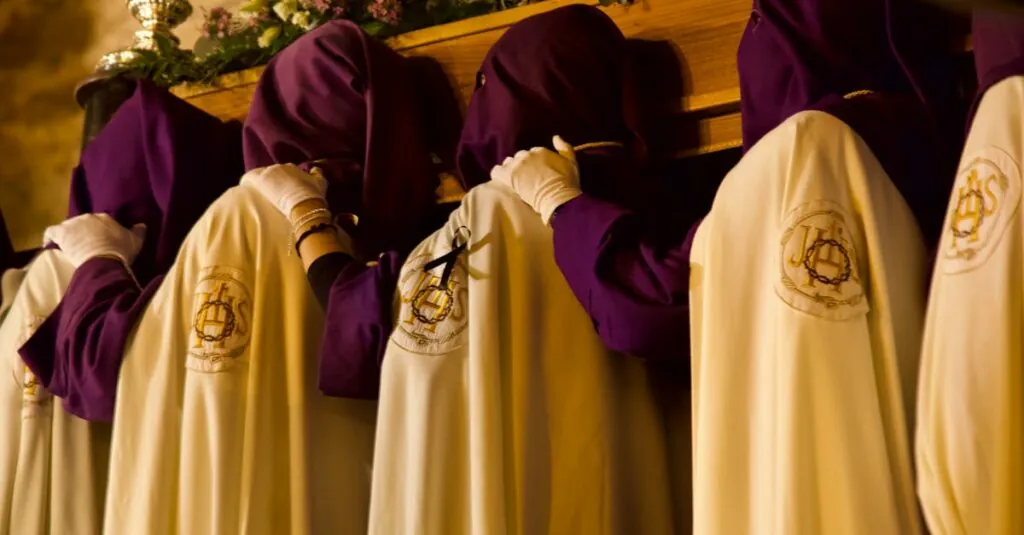Table of Contents
ToggleSpain’s culture is a vibrant tapestry woven from centuries of history, art, and culinary delights. From flamenco dancing that sets the heart racing to mouthwatering tapas that make taste buds sing, there’s no shortage of fascinating facts waiting to be uncovered. It’s a land where siestas are sacred and fiestas are a way of life—who wouldn’t want to dive into a culture that encourages afternoon naps and all-night celebrations?
Overview of Spain’s Rich Cultural Heritage
Spain’s cultural heritage showcases a tapestry of historical influences. The Iberian Peninsula reflects a blend of Roman, Moorish, and Christian traditions. Gastronomy stands out with iconic dishes like paella and tapas. Each region presents unique culinary flavors and techniques.
Art plays a vital role in Spain’s cultural narrative. Renowned artists like Pablo Picasso and Salvador Dalí shaped modern art movements. Architecture also flourishes, evident in structures such as the Sagrada Família and Alhambra. These landmarks attract millions of visitors annually.
Language adds to Spain’s diversity. Spanish, or Castilian, acts as the official language, yet regions boast their own dialects such as Catalan and Basque. These linguistic variations enrich the country’s identity.
Music and dance capture Spain’s lively spirit. Flamenco originates from Andalusia, known for its passionate guitar playing and expressive dance. Regional folk music traditions highlight local customs and celebrations.
Festivals punctuate the Spanish year. Events like La Tomatina and Las Fallas draw participants from around the globe. These celebrations reflect communal values and vibrant traditions.
Daily life emphasizes social interaction. Siestas offer a chance for relaxation, while meals often become lengthy gatherings. Celebratory fiestas unite communities, highlighting the importance of family and friendship.
The rich cultural heritage of Spain reflects a commitment to preserving historical narratives. He/she/it embodies an enduring spirit, inviting exploration and appreciation from all corners of the world.
Key Spain Culture Facts
Spain boasts a vibrant cultural landscape shaped by its rich history and diverse traditions. Language, gastronomy, and festivals play crucial roles in defining this fascinating country’s identity.
Language and Dialects
Spanish serves as the official language of Spain, spoken by the majority. Regional dialects, including Catalan, Basque, and Galician, add depth to the linguistic diversity. Each dialect reflects unique history and culture, enriching communication. Barcelona, Madrid, and Valencia showcase various regional expressions. Bilingualism is common in regions like Catalonia, where both Catalan and Spanish are spoken. Understanding these languages fosters a deeper appreciation of Spain’s cultural nuances.
Culinary Traditions
Spanish cuisine offers an array of flavors and regional specialties. Tapas, small dishes served in bars, highlight the social aspect of dining. Iconic dishes, such as paella from Valencia and gazpacho from Andalusia, showcase local ingredients. Meat, seafood, and vegetables play significant roles in these culinary delights. Olive oil stands out as a staple in many recipes, contributing to the distinctive Mediterranean flavor. Meals often span hours, emphasizing the importance of community and conversation.
Festivals and Celebrations
Spain hosts numerous festivals throughout the year, reflecting its vibrant culture. La Tomatina in Buñol involves a massive tomato fight, bringing joy to thousands. Las Fallas showcases elaborate sculptures that are burned to celebrate St. Joseph’s Day in Valencia. Semana Santa, or Holy Week, features solemn parades and deep-rooted religious traditions. Residents actively participate, creating a strong sense of community during these events. Festivals often blend history, art, and regional pride, highlighting Spain’s diversity.
Art and Architecture
Spain’s art and architecture reflect its diverse history and cultural influences, showcasing remarkable contributions across various periods.
Influential Spanish Artists
Pablo Picasso remains one of Spain’s most renowned artists. His groundbreaking work in Cubism transformed modern art. Salvador Dalí, also pivotal, introduced surrealism to a broader audience with his dreamlike paintings. Joan Miró added a unique blend of color and abstraction, forging a distinct style. Francisco Goya offered a glimpse into the social and political landscapes of his time through his powerful imagery. Antonio Gaudí, primarily known for his architecture, integrated vibrant artistic elements into his designs, notably in the Sagrada Família. Each artist brings a distinct perspective, shaping Spain’s artistic narrative.
Notable Architectural Styles
Spanish architecture features a variety of styles influenced by historical events. Romanesque architecture predominated in the Middle Ages, characterized by sturdy structures and rounded arches. The Moorish influence introduced elaborate tilework and intricate carvings, exemplified by the Alhambra. Gothic architecture later emerged, marked by soaring cathedrals like La Seu in Barcelona. The Renaissance brought harmony and proportion, seen in structures like the Royal Palace of Madrid. Modernist architecture, notably championed by Gaudí, embraces innovative designs, blending natural shapes with functionality. Each style contributes to the rich tapestry of Spain’s architectural heritage.
Music and Dance
Music and dance form an integral part of Spain’s cultural identity, celebrating its historical roots and vibrant spirit.
Traditional Spanish Music Genres
Flamenco stands out as a defining genre, with its roots in Andalusian music and dance. Incorporating guitar, vocals, and handclaps, flamenco embodies passion and emotion. Folk music variations exist across regions, showcasing unique instruments like the bagpipes in Galicia and the hurdy-gurdy in Catalonia. Traditional music festivals, such as the Festival Internacional de Flamenco in Jerez, attract enthusiasts from around the world, popularizing these genres. Other styles, including jota and muñeira, highlight Spain’s diverse musical landscape, offering insight into the local culture and history.
Popular Dance Forms
Flamenco dance captivates audiences with its intricate footwork and expressive movements. Influences from various cultures contribute to its complexity, blending Moorish, Gypsy, and Jewish traditions. The traditional jota features lively choreography, often performed during regional celebrations and festivals. In contrast, sevillanas showcases a cheerful, folkloric style celebrated during the Feria de Abril in Seville. Social dances like salsa and tango, while not originally Spanish, find a significant presence in urban areas, reflecting contemporary influences. Each dance form amplifies community unity, fostering a sense of shared identity through rhythm and movement.
Spain’s culture is a vibrant tapestry woven from its rich history and diverse influences. The blend of traditions and modern practices creates a unique atmosphere that captivates both locals and visitors alike. From the passionate rhythms of flamenco to the communal joy of tapas, every aspect of Spanish life invites connection and celebration.
With its renowned artists and stunning architecture, Spain stands as a testament to creativity and innovation. The country’s commitment to preserving its cultural heritage ensures that these traditions continue to thrive. Exploring Spain’s cultural landscape offers a deeper understanding of its identity and a chance to experience the warmth and hospitality that define this remarkable nation.




